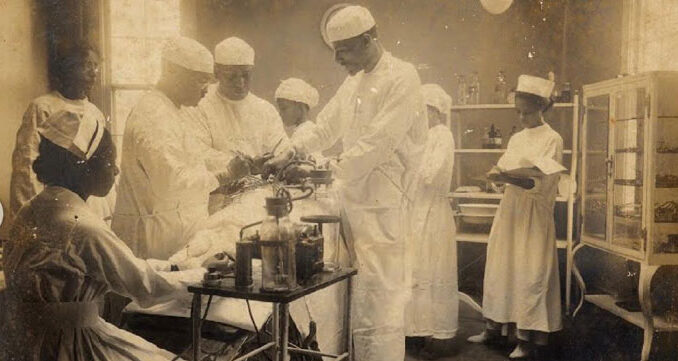
Kai Davis Data News Weekly Contributor
The Amistad Research Center and Hancock Whitney Bank teamed up with Dillard University to launch a digital exhibition for Black History Month that highlighted African American life in New Orleans with a collection of over 200 Black organizations, leaders, and businesses from the 19th Century through the mid-20th Century.
“This exhibition is a survey of African American leadership in New Orleans and the areas of business, philanthropy, education and other areas during the Jim Crow Era,” said Christopher Harter, the Deputy Director for Amistad Research Center at the February 24, 2021 launch of the exhibit.
The exhibit titled: “Things We Do For Ourselves: African American Civic Leadership in New Orleans,” shows how Black businesses sustained the community.
“[The exhibit] fosters an appreciation for African American contributions, to the diverse and unique culture that distinguishes New Orleans from all others,” said Tamara Wyre, a Senior Vice President and the Director of Diversity, Equity, and Inclusion for Hancock Whitney.
The exhibit was designed to be permanently virtual through the center and Hancock Whitney’s sites. It pulls from the Amistad’s collections of Black Life in the city at a time when African Americans had to provide their own restaurants, facilities, and hospitals.
“The digitalization of these documents and public access, I think it’s very important, especially as we all seek to understand more about our local history and Black progress,” said Dr. Kalenda Eaton, a Professor of African and African American Studies at the University of Oklahoma and a Dillard alumna, who spoke at the virtual launch.
Special artifacts that depict African American history within the Black community of New Orleans shown in the exhibit include the first Black Benevolent Associations and Social Clubs that are still in existence and some that are no longer around, like the first Black owned life insurance company, the Unity Industrial Life Insurance.
“[It] comes from the idea of taking care of ourselves,” said Dr. Kara Olidge, the Executive Director of the Amistad Research Center.
“During that time, we had to have those particular organizations, we had to look out for each other,” added Dr. Kristen Broady, the Director of The Hamilton Project. “We couldn’t go to the White funeral homes; we couldn’t go to the White insurance companies. I think part of what Integration did, while of course it was a good thing, it caused us to lose some of what we had ourselves. I think students need to learn these things,” Broady said.
Recommended For You.



Be the first to comment